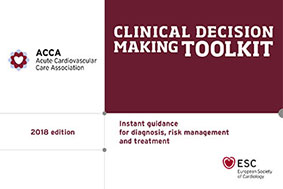Secondary prevention - the facts
- Cardiovascular disease (CVD) is the world’s number one killer, accounting for 1 in 5 deaths in Europe
- Without effective treatment of risk and risk factors, the immediate mortality after an acute event increases with a further rise in patients dying in the subsequent year
- In those who survive an initial post-MI period, an increased risk of death from cardiovascular causes persists indefinitely
- Reducing morbidity and mortality among post-myocardial infarction and other patients at high risk of subsequent event require the implementation of effective prevention measures
- Evidence shows an increase in risk factor awareness in developing countries, but a decrease in developed countries – this issue is a global problem
- Guidelines targets are achievable: Evidence shows that effective secondary prevention measures outlined in Clinical Practice Guidelines can significantly reduce the risk of a subsequent cardiovascular event
- There is need and room for improvement!
About the ESC Prevention of CVD Programme
The ESC Prevention of CVD Programme is led by the European Association of Preventive Cardiology (EAPC) in collaboration with the Association for Acute CardioVascular Care (ACVC) and the Association of Cardiovascular Nursing & Allied Professions (ACNAP). The programme is being rolled out in three phases:
- Phase I: Secondary Prevention after Myocardial Infarction (completed)
Understanding the needs – Evaluating gaps in knowledge & adherence to treatment: literature review, health professional survey and awareness initiative. - Phase II: Focus on Secondary Prevention (January 2016 – June 2017)
Development of educational programme and tools for improved management of high-risk patients and patients after acute coronary syndromes: scientific resources, educational activities, and practical tools. - Phase III: Continued Roll-out, Evaluation and Follow-up



 Our mission: To reduce the burden of cardiovascular disease.
Our mission: To reduce the burden of cardiovascular disease.